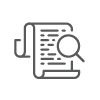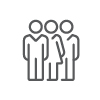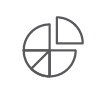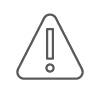|
No./Title: COM124/Appearance Code for Simulated and Clinical Experiences |
Resp. Office: Medical Education Approval Body: CUME |
Effective Date: 09/20/21 |
|
Category: COM/UME |
Last Review: 10/21/24 |
Next Review: 10/21/27 |
|
Contact: Michael Whitt, Ph.D. Assoc. Dean for Medical Education |
901-448-4634 | |
Related Policy: |
POLICY
It is the policy of the University of Tennessee Health Science Center (UTHSC) College of Medicine (COM) to provide guidelines regarding the appearance of medical students during professional interactions with colleagues and patients.
RATIONALE AND PROCEDURE
Students, residents, and providers are expected to place value on demeanor and personal appearance, including attire. Reasons are rooted in concerns for infection control as well as communication and cultural sensitivity. This document sets forth appearance standards necessary to meet the service and safety objective of placing patient welfare first, and the educational objective of preparing the student to assume the role of a professional health care worker. Patient trust and confidence in the health care provider are essential to successful treatmentexperiences and outcomes. The message communicated by dress and appearance plays a fundamental role in establishing this trust. Students should consider the cultural sensitivities of their most conservative potential patients and present themselves in a manner that will earn their patients’ respect, ensure their trust, and make them feel comfortable. Recent trends in clothing, body art, and body piercing may not be generally accepted by your patients. In addition, identification as a COM student has safety and practical implications.
The guidelines outlined below represent minimum standards to ensure that students present a positive, professional image to patients. Students can expect to receive feedback from standardized patients, faculty, course directors and peers when appearance does not meet expectations. Note that individual clinical facilities may have their own appearance or dress codes that may be more restrictive. In that case, the student should adhere to the clinical facility’s policy while rotating at that facility. Students with questions about their appearance or what is permitted should direct questions to their clerkship or course director.
ID Badges and White Coats
- Medical students are expected to always wear their UTHSC identification badge in clinical and academic settings, ideally placed at the collar or top of the shirt/dress or at the breast pocket of a lab coat or on a lanyard where allowed.
- Medical students should wear white, long sleeve jacket-length coats in patient care settings, as deemed appropriate. White coats should have the UT Medical Student patch on the shoulder.
- White coats should be laundered frequently (at least once weekly) to maintain cleanliness.
Scrubs
- Scrubs must be worn in compliance with the policies of the institution and the clerkship to which the medical student is assigned for patient care rotations.
- Scrubs are not allowed for preclinical PCM OSCEs and simulated patient encounters.
- Shoe covers and surgical gowns should be removed before leaving the designated clinical areas and should not be worn while in the outpatient clinics or when making rounds on the inpatient services, unless permitted by the institution.
- Students who for religious reasons are unable to wear scrub pants in the OR must contact the Clerkship Director as soon as possible (during M2 year) to procure scrub dresses or skirts.
Appropriate Clothing
- Button down dress shirts, dress tops, blouses or sweaters must extend to the waistband of pants.
- Sleeveless shirts must have at least a three-finger-width strap over the shoulder if worn alone.
- Button-down shirts should not be open below the second button.
- Ties are rotation dependent. Consider using a tie clip to avoid contact with the patient.
- Business-type dress slacks or pants. No leggings without long tunic-style shirts, skirts, or dresses.
- Skirts and dresses should be not shorter than 4 inches above the knee.
- Clothing should be clean and not excessively worn.
- Clothing must fit so that inappropriate exposure does not occur during normal work activities, including stooping/bending for physical exams.
Clothing Not Permitted
- Jeans, cargo pants, cut-offs or shorts, yoga pants, overalls.
- T-shirts, tank tops, halter tops, spaghetti straps, translucent tops, cut-out shoulder styles.
- Exercise or workout clothing, including sweatpants.
- Leggings worn without a tunic, dress, or skirt.
- Wearing sunglasses indoors, unless for a medical reason.
- Clothing with images, wording, statements, or logos that may be perceived as offensive by patients, families, or others.
- Excessively worn clothing with holes, rips, tears, or frayed edges.
- Clothing that is excessively tight or reveals cleavage, undergarments, midriff, back, or buttocks.
Shoes
- Shoes must be clean, in good repair, and appropriate for the job functions and duties.
- Clean tennis or running shoes are permitted due to long work and call hours.
- No flip-flops, slippers, or open-toed shoes/sandals. Hats/Head coverings
- Non-surgical hats or caps may not be worn while on duty, unless the head covering is based on religious beliefs.
Personal Hygiene
- All students are required to maintain appropriate personal hygiene (bathing, use of deodorant, etc.) with respect to body, hair, teeth, and nails.
- Fingernail length should not interfere with either student or patient safety or the student’s ability to perform clinical duties. At some clinical sites, nail polish or artificial nails may not be permitted.
Hair
- Hair color and style must be appropriate for the clinical work environment.
- Hair must be clean and conform to the safety requirements of the specific work area.
- Long hair may neither obstruct vision nor interfere with the student’s clinical performance. Hair longer than shoulder length should be pulled back and secured during procedures.
- Coverage of hair is required in certain areas, such as operating suites, as a precaution against the dissemination of infection.
- Note that hair colors outside the natural range including but not limited to yellow, green, pink, purple, or blue may be distracting to some patients or not permitted in some clinical facilities.
Facial Hair
- Facial hair (sideburns, moustaches and beards) must be neatly groomed, clean, and must not interfere with the student’s clinical performance.
- For safety and infection control reasons, students working in some areas of the hospital, such as operating rooms, may not be permitted to have beards, or may be required to wear beard guards.
- If facial hair interferes with wearing an N95 mask, then a PAPR or equivalent must be worn when seeing patients on airborne precautions.
Perfumes/Colognes
- Do not wear or use strongly scented colognes, perfumes, or detergents in any clinical setting, as some patients and/or colleagues may be sensitive or allergic to scented chemicals.
Jewelry and Body Piercings
- Jewelry must be reasonable in shape and size, appropriate to the work setting, as defined by the clerkship or clinical facility, and should not interfere with patient care, job performance, or safety.
- Earrings and small nose studs are the only permitted forms of visible pierced jewelry.
- Rings must be small enough to allow for the use of gloves, without risk of tearing.
- Rings, watches, and bracelets must come off before scrubbing.
Tattoos
- Tattoos and body art with wording or images that may be perceived as offensive should be covered during the time of professional contact with patients and families.
Appearance Code Violations
- If a medical student reports to a classroom, service or clinic improperly dressed or groomed the supervising faculty member may instruct the medical student to return home to make appropriate changes. Preceptors have the right to cancel experiences based on inappropriate appearance.
- 1st violation: Verbal warning.
- 2nd violation: Written warning. Course/Clerkship Director will complete a professionalism form per the Professionalism Policy.
- 3rd violation: Reduction in professionalism grade for the block/course and the student will be required to meet with the Associate Dean for Student Affairs. The student may be referred to the Professionalism Committee and/or Progress and Promotions Committ ee.
Exceptions
- The University recognizes the importance of individually held cultural, ethnic, and religious beliefs of its students.
- Exceptions to this policy may be made based on religious, cultural, or ethnic beliefs, disability, medical condition or other compelling reason on a case-by-case basis, at the discretion of the Associate Dean of Student Affairs and the Associate Dean of Medical Education.
APPROVAL HISTORY
Effective: 09/20/21
Revised: 10/21/24






